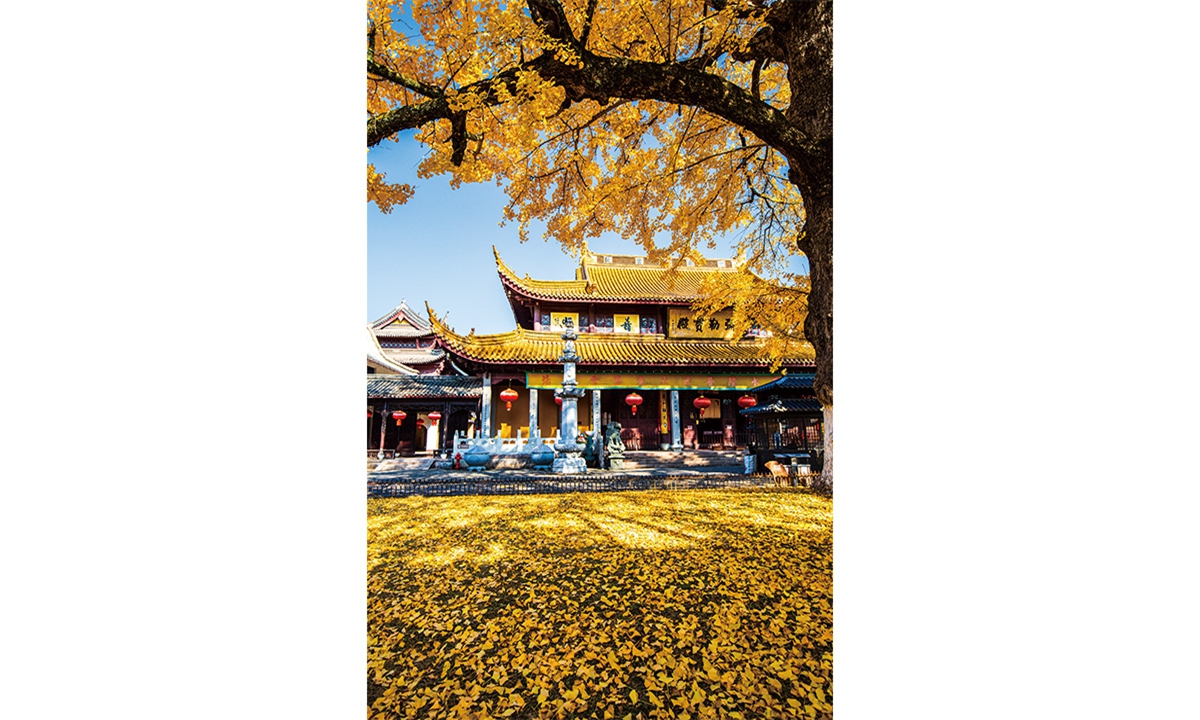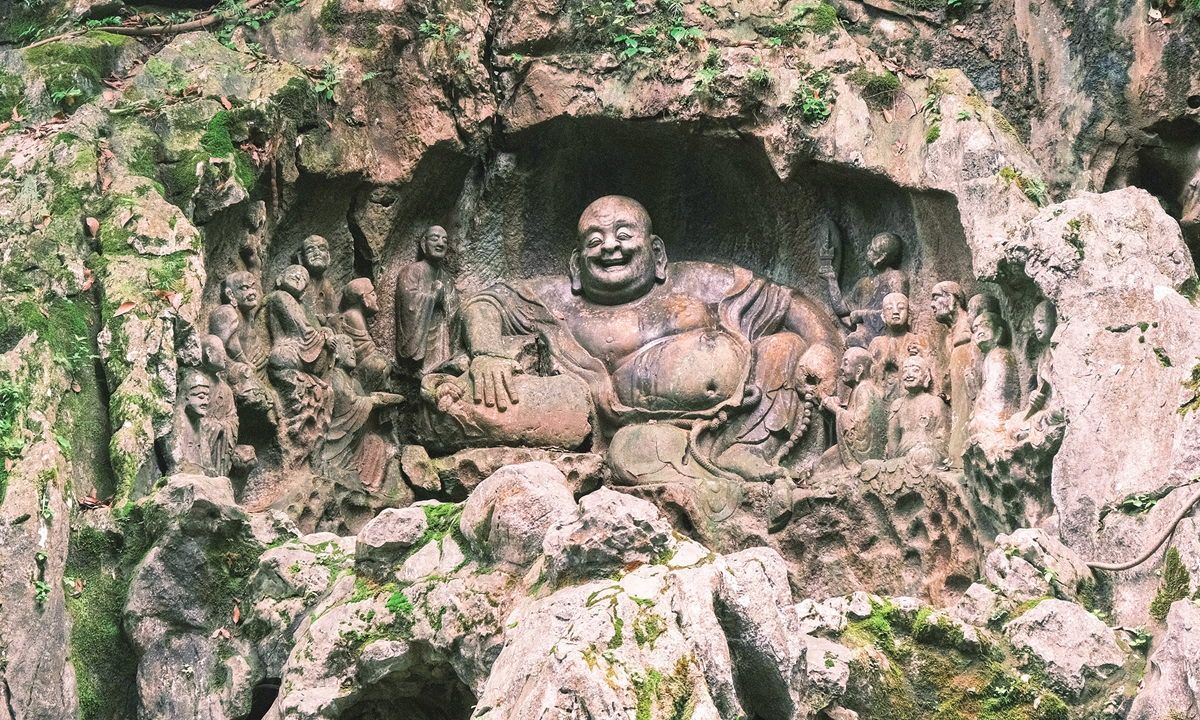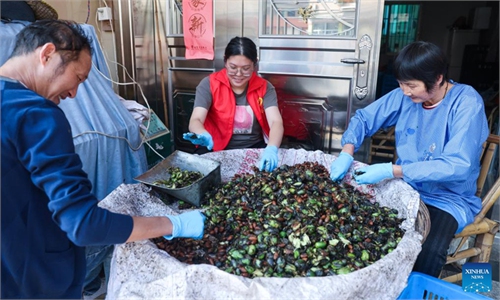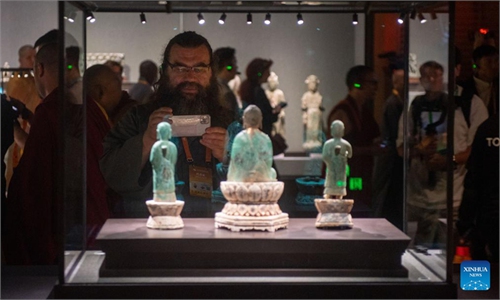ARTS / CULTURE & LEISURE
Zhejiang Province revitalizes Buddhist legacy, boosts tourism
Niche route

The Xuedou Temple in Ningbo, East China's Zhejiang Province Photos: VCG
Whether it is the Guanyin culture represented by the Putuo Mountain in Zhoushan, or the Maitreya Buddha culture showcased at the Xuedou Mountain in Ningbo, East China's Zhejiang Province has been gifted by history with rich Buddhist tourist resources.
Including the Lingyin Temple in Hangzhou, the province boasts more than 4,000 Buddhist temples built in eras such as Eastern Jin Dynasty (317-420). In ancient times, these were sacred destinations for Buddhists, but today they have become popular touristic destinations.
Historical treasures
The Xuedou Mountain in Ningbo's Fenghua district is closely associated with the Maitreya culture since the district has long been believed to be the birthplace of the Maitreya Buddha's incarnation - Monk Budai.
The name Maitreya comes from a Sanskrit word, which means "friendship." In Chinese, this Buddha is called Mile Fo. According to Chinese folklore, Monk Budai was born at the end of the Tang Dynasty (618-907). He was known for his plump figure, generous personality and an ever-present smile.
"His image closely resembles that of the Maitreya Buddha as portrayed in Chinese culture, showcasing the unique development of Buddhism in China and its integration with the country's folk culture," Ou Yufen, a Buddhist scholar told the Global Times.
The signature Mile Fo culture has given Ningbo an opportunity to develop cultural tourism. In 2023, a themed cultural festival was launched, incorporating academic forums and the Mile Fo culture-related temple fair.
The Maitreya Altar, a new landmark of the Xuedou Mountain was inaugurated in an event that involved more than 2,000 visitors from home and abroad.
"The Buddhism-themed event isn't solely to cater to the Buddhist community. Instead, it serves as a lever to help the public gain a deeper understanding of the local culture, environment, food and so forth," cultural sociologist Xu Shuming told the Global Times.
Similar to Ningbo's Maitreya theme, Zhoushan, also located in Zhejiang, boasts its own Buddhist destination, the Putuo Mountain.
Dedicated to Guanyin, a Bodhisattva known as the Goddess of Mercy in China, the mountain is home to several important temples, including the famous Puji Temple, which houses impressive statues and historical relics.
Compared to other Buddhist sites in Zhejiang Province, the Putuo Mountain is always popular and crowded with visitors. However, to better leverage its resources, the site has initiated a detailed strategy.
Focusing on the management of scenic spots, the Longsha area of the Putuo Mountain issued a detailed plan in August 2024.
The document focuses on the protection of scenic spots and the management of the nearby residential area. Additionally, it also specifies that a total of 22 types of facilities related to travel, sightseeing, and accommodation will be established in the area. The document was the first detailed plan approved and put into action since the establishment of the Putuo Mountain Scenic Area in 1982.

A statue of the Maitreya Buddha, or Mile Fo at the Feilai Peak, next to the Lingyin Temple in Hangzhou, East China's Zhejiang Province
Smart management
Leveraging the advanced innovative industries of Zhejiang Province, the local's Buddhist tourism resources are attempting to integrate technology and digitalization.
To provide all-round support to the large number of visitors, the Putuo Mountain scenic area has launched an "On-Demand Travel" app. The app features multiple functions such as a code to access multiple parts of the scenic area, and a reservation system supporting hotel booking, guided tours, and luggage handling.
In Hangzhou, the city's most well-known Buddhist site is the Lingyin Temple. Here a creative system that is called the "1+6+N" has been designed and used for the digital management of the site.
Data about the temple's real-time conditions, traffic flow and potential security problems are gathered by the system. At the site's headquarters, also known as the "data control cabin," a huge digital screen has also been installed, allowing staff members to promptly cope with any emergencies on site. This technology also supports efforts to preserve the site's Buddhist cultural heritage.
Since 2015, the Lingyin Temple has employed 3D imaging technology to conduct three-dimensional digital preservation of its cultural relics.
This work includes taking photos and making stone rubbings of over 200 cliff inscriptions around the Feilai Peak, the Lingyin Temple's most iconic visiting spot.
To better engage visitors, and especially young tourists, the Linying Temple has also introduced a range of creative products, including milk tea, prayer beads bracelets, and coffee products that carry Buddhist aesthetics such as bamboo decorations and images of Buddhas.
These products have gained exposure on social media, attracting more visitors to the traditional temple. "Traditional Buddhist culture is not opposed to modern societal culture; rather, it should embrace the progress of the times, especially the modern developments in China," Ou told the Global Times.



